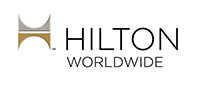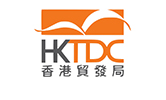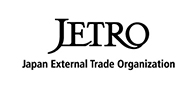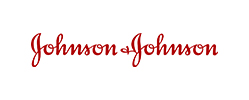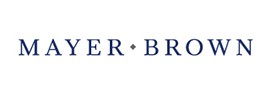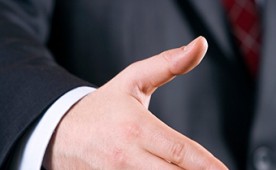Banking, Mortgages & Credit Industry Market Research
Competitive Intelligence, Business Analysis, Forecasts, Market Size, Trends, Companies, Statistics
Available Data Services: Custom Research Projects, Database Subsription or PDF eBooks
PLUNKETT PROVIDES IN-DEPTH STATISTICS TABLES COVERING THE FOLLOWING INDUSTRY TOPICS:
-
U.S. Banking, Mortgages & Credit Industry Statistics and Market Size Overview
-
Top 50 U.S. Bank Holding Companies: June 30, 2023
-
Global Credit Card Industry Statistics and Market Size Overview
-
Number of Failed U.S. Bank Institutions, 1980-2020
-
Assets & Liabilities, U.S. Agency- & Government Sponsored Enterprise (GSE)-Backed Securities by Holder: 2012- 2020
-
Deposit Insurance Fund Balance and Insured Deposits: 2012-2020
-
FDIC Insured Institution Statistics: Fourth Quarter 2023
-
Assets & Liabilities of FDIC-Insured Commercial Banks, Grouped by Asset Size: June 2021
-
Employment in the Banking Industry, U.S.: 2018-2024
-
Home Mortgages by Holder, U.S.: 2012-2020
-
Top Ten Federally-Chartered & State-Chartered Banks by Assets: June 2020
-
Deposits, Income & Expenses of FDIC-Insured Commercial Banks: 2016-June 2021
-
Mortgage Loans Outstanding, U.S.: 1985-2023
-
Assets & Liabilities of Foreign Banking Offices in the U.S.: 2017-2nd Quarter 2020
-
New Privately-Owned Housing Units Started, U.S.: 1985-2023
-
Homeownership Rates by Region, U.S.: Selected Years, 1965-2023
-
Prime Interest Rate, U.S.: 1955-October 2023
-
Bond Yields & Interest Rates, U.S.: Selected Years, 1950-2022
-
Homeownership Rates by Race & Ethnicity of Householder, U.S.: 2001-2020
-
Consumer Credit Outstanding, U.S.: 1972-August 2023
-
Consumer Credit Outstanding by Major Holders, U.S.: 2015-2nd Quarter 2020
-
Terms of Credit at Commercial Banks, U.S.: 2018-2nd Quarter 2023
-
Loan Performance, FDIC-Insured Institutions: March 2020
Top Companies Profiled
The following is a partial listing for this industry. As a subscriber, you will have access to the leading companies and top growth companies. This includes publicly-held, private, subsidiary and joint venture companies, on a global basis as well as in the U.S.
Hundreds of Top Companies Profiled, Including:
PLUNKETT PROVIDES UNIQUE ANALYSIS OF THE FOLLOWING TRENDS THAT ARE DRIVING THIS INDUSTRY:
-
Introduction to the Banking, Mortgages & Credit Industry
-
For the Long Term in the U.S, Customers Increase Savings/Less Inclined to Use Debt
-
Aging Populations, Baby Boomers Create Opportunities/U.S. Pension Accounts Top $24.8 Trillion
-
The Coronavirus’ Effect on the Banking, Mortgages & Credit Industry
-
Basel III, Dodd-Frank Act and Volcker Act Increase Regulation
-
Investment Firms, Banks Compete for Clients in High Net Worth Households
-
Banks Vie for Previously Underserved Markets and Focus on Hispanics
-
Wal-Mart Offers Checking and Debit Service in the U.S./Banco de Wal-Mart in Mexico
-
China’s Banking Market Slows
-
Credit Default Swaps (CDS) and Derivatives Soar into the Trillions of Dollars
-
India’s Foreign Banking Restrictions Expected to Tighten/Microloans Slow
-
Shadow Banking Soars with Non-Bank Alternatives/Financial Technology (“FinTech”) Enables Online Lending and Crowdfunding
-
Credit Default Swaps (CDS) and Derivatives Soar into the Trillions of Dollars
-
Online Banking Grows on Mobile Devices/The Internet and ATMs Replace Branches and Tellers
-
Credit Card Issuers Face New Regulations/Visa and MasterCard Enjoy Global Growth
-
Smartphones and Financial Technology (“FinTech”) Enable New Mobile Payment Methods
-
Peer-to-Peer (P2P) Payment Systems, such as Zelle and Venmo, Soar in Popularity
-
Credit Card Technologies Advance with Embedded Chips (EMV) for Better Security
-
In Emerging Nations, mChek and M-PESA Enable Remote Banking via Cellphone
-
Smaller Down Payments/Easier Loan Qualifications Change Mortgage Market
-
Near Field Communications (NFC) Changes Credit and Debit Cards
-
Online Competition Changes the Mortgage Industry
-
Hedge Funds Regroup and Play a Major Role in Financial Products Including Derivatives, Lending and Insurance
-
Financial Technology (FinTech) Is Driven by Mobile Payments, Lending, Insurance and Simplified Online Investment Management
-
Cryptocurrencies and Blockchain Explained
-
Digital Currency, Bitcoin and Blockchain Technologies Advance
-
Open Banking May Revolutionize the World of Banking and Finance
-
The Future of Banking, Credit Cards, Mobile Payments and Mortgages
Key Findings:
A complete market research report, including forecasts and market estimates, technologies analysis and developments at innovative firms within the Banking, Mortgages & Credit Industry. Gain vital insights that can help shape strategy for business development, product development and investments.
Key Features:
-
Business trends analysis
-
In-depth industry overview
-
Technology trends analysis
-
Forecasts
-
Spending, investment, and consumption discussions
-
In-depth industry statistics and metrics
-
Industry employment numbers
Additional Key Features Include:
Industry Glossary
Industry Contacts list, including Professional Societies and Industry Associations
Profiles of industry-leading companies
-
U.S. and Global Firms
-
Publicly held, Private and Subsidiaries
-
Executive Contacts
- Revenues
-
For Public Companies: Detailed Financial Summaries
Pages: 648
Statistical Tables Provided: 12
Companies Profiled: 500
Geographic Focus: Global
Price: $399.99
Key Questions Answered Include:
-
How is the industry evolving?
-
How is the industry being shaped by new technologies?
-
How is demand growing in emerging markets and mature economies?
-
What is the size of the market now and in the future?
-
What are the financial results of the leading companies?
-
What are the names and titles of top executives?
-
What are the top companies and what are their revenues?
This feature-rich report covers competitive intelligence, market research and business analysis—everything you need to know about the Banking, Mortgages & Credit Industry.
Plunkett Research Provides Unique Analysis of the Following Trends Affecting the Banking, Mortgages & Credit Industry
-
Introduction to the Banking, Mortgages & Credit Industry
-
Aging Populations, Baby Boomers Create Opportunities/U.S. Pension Accounts Top $36.7 Trillion
-
Basel III, Dodd-Frank Act and Volcker Act Increase Regulation/European Solvency II and MiFID 2 Take Effect
-
Investment Firms and Banks Compete for Clients in High-Net-Worth Households
-
Banks and Apps Vie for Previously Underserved Markets, Including Hispanics
-
Walmart Offers Financial Services in the U.S./Banco de Walmart in Mexico
-
China Sees Growth in Online Payments, Banking and Lending/Alipay Soars
-
Credit Default Swaps (CDS) and Derivatives Reach into the Trillions of Dollars
-
Non-Banking Alternatives Grow in Lending and Crowdfunding
-
Smartphones and Neobanks Replace Branches and Tellers
-
Visa and MasterCard Enjoy Global Growth/Apple Card Use Soars
-
Smartphones and Financial Technology (FinTech) Enable New Mobile Payment Methods
-
Peer-to-Peer (P2P) Payment Systems, such as Zelle and Venmo, Soar in Popularity
-
In Emerging Nations, mChek and M-PESA Enable Remote Banking via Smartphone
-
High Interest Rates Hinder Mortgage Originations, Slow Home Sales
-
Online Competition Changes the Mortgage Industry
-
Hedge Funds and Private Equity Play a Major Role in Financial Products Including Derivatives, Lending and Insurance (Shadow Banking)
-
Financial Technology (FinTech) Enables Online Payments, Lending, Insurance and Robo Advisors
-
Cryptocurrencies and Blockchain Explained
-
Open Banking Revolutionizes the World of Banking and Finance
-
The Future of Banking, Credit Cards, Mobile Payments and Mortgages
Plunkett Research Provides In-Depth Tables for the FollowingBanking, Mortgages & Credit Industry Statistics
-
U.S. Banking, Mortgages & Credit Industry Statistics and Market Size Overview
-
Global Credit Card Industry Statistics and Market Size Overview
-
Top 50 U.S. Bank Holding Companies: June 30, 2023
-
FDIC Insured Institution Statistics: 2nd Quarter 2022
-
Prime Interest Rate, U.S.: 1955-October 2023
-
Bond Yields & Interest Rates, U.S.: Selected Years, 1950-2022
-
Homeownership Rates by Region, U.S.: Selected Years, 1965-2022
-
New Privately-Owned Housing Units Started, U.S.: 1985-2022
-
Mortgage Loans Outstanding, U.S.: 1985-2023 Q2
-
Consumer Credit Outstanding, U.S.: 1972-August 2023
-
Terms of Credit at Commercial Banks, U.S.: 2018-2nd Quarter 2023
-
Employment in the Banking Industry, U.S.: 2016-July 2023


